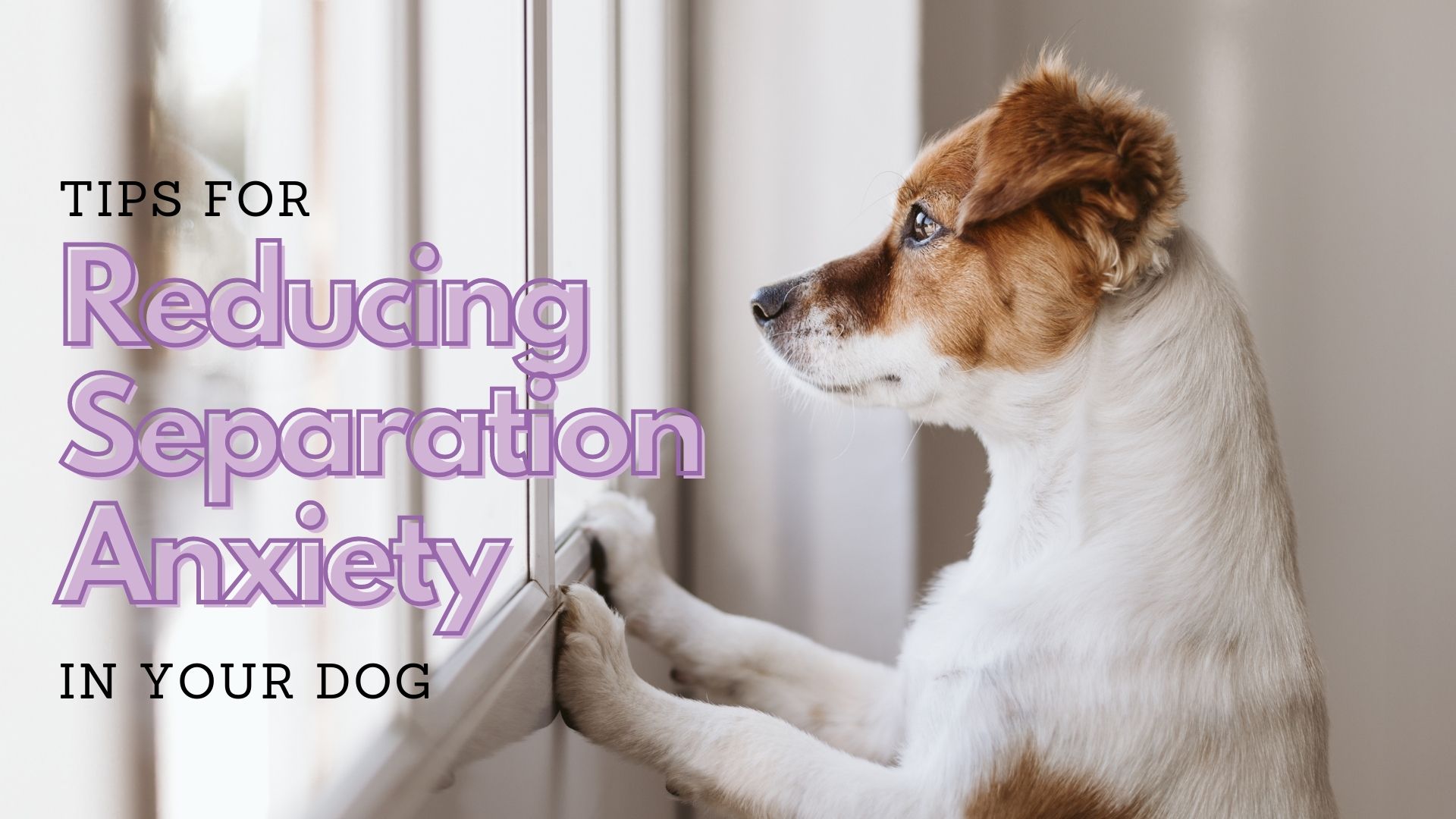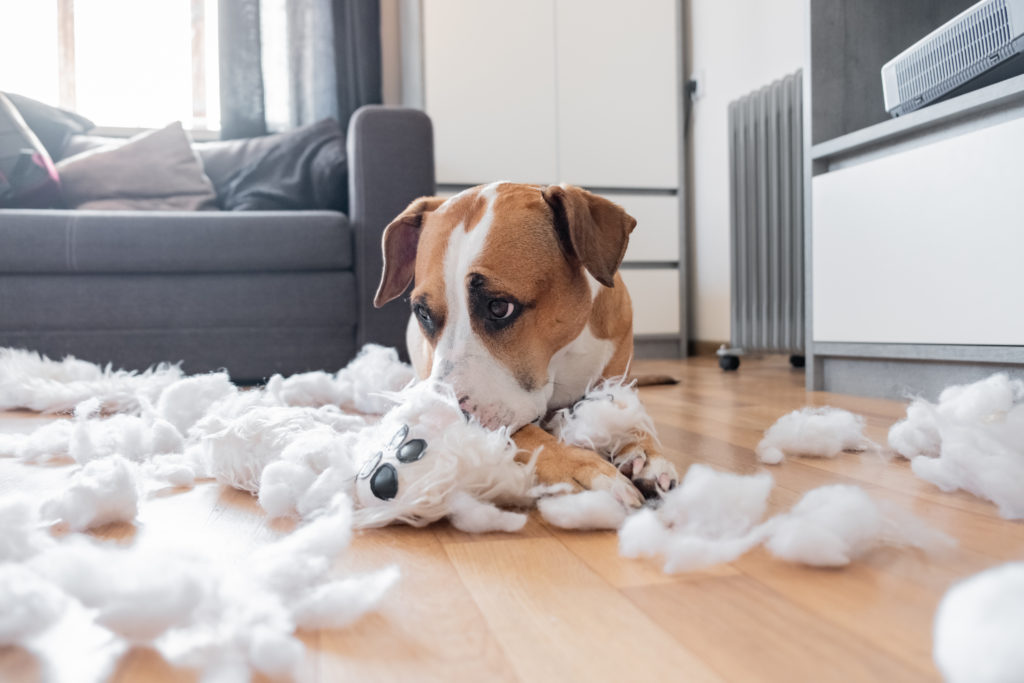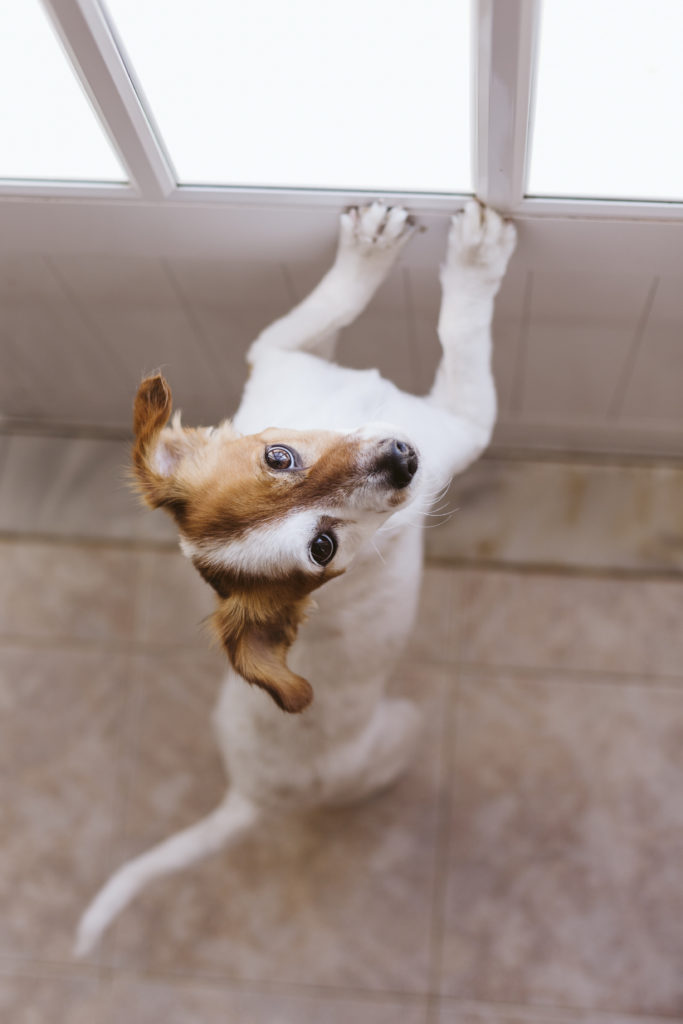
How to Reduce Separation Anxiety in Your Dog
So you’ve adopted a dog during quarantine, and given them lots of love and attention while working from home. But what happens when you have to go back to the office? To your dog, it might seem like you are disappearing forever. Your dog might be fine being alone for long stretches of the day. A schedule change in a dog’s home environment is a major potential cause for canine separation anxiety. On top of that, separation anxiety is a lot more common in shelter dogs, who may have already experienced a traumatic loss before getting adopted.
But don’t fret! There are plenty of resources for dog separation anxiety training, and A.R.F.-Animal Rescue Foundation is here to help. Find out more on how to recognize and reduce separation anxiety in your dog below.

What are the Signs of Separation Anxiety?
You might be noticing signs of separation anxiety in your dog when you leave the house, even if you haven’t gone back to working at the office yet. Your dog might seem agitated, anxious, or depressed when you are getting ready to leave or while you are gone.
Symptoms of distress:
- Barking, howling, or whining when guardian is away
- Panting, drooling, or pacing
- Digging or trying to escape when guardian is away
- Broken teeth or nails as a result of digging or trying to escape
- Urinating, defecating, or eating own excrement when guardian is away
- Chewing up toys, furniture, and other items when guardian is away
Sometimes, these behaviors when considered separately might not be signs of separation anxiety, but could indicate a different behavioral or medical issue. Find out more information on possible causes of these symptoms from this ASPCA article on separation anxiety.
You can also set up a camera to see how your dog reacts when you are gone. This footage could be very enlightening in assessing whether your dog has separation anxiety and determining next steps.
Dog Separation Anxiety Training Tips
If you think your dog might be developing separation anxiety, see your vet first. There are different ways to approach separation anxiety–home training, professional training, and in some severe cases, medication. But every dog is different and your vet is best qualified to give you safe and expert advice.
As a start, you can try these tips to help your dog feel safe and relaxed while you’re gone.
Training Tips

- Get your dog into “resting mode” by exercising them with a walk before you leave.
- Start practicing with your dog by leaving for 5-10 minutes at a time. Gradually increase the amount of time you are gone until they can make it a full work day.
- Don’t make a big deal of leaving or returning home. If you leave without fanfare and act like your departure is just as normal as going to another room, your dog may eventually see it that way too.
- Give your dog access to an item that smells like you. It could help to comfort them when you’re gone.
- As you’re training your dog to get used to your absence, try not to leave them completely alone. Take them to doggy day care, or have a dog sitter or friend stay with your dog while you’re gone.
- If you do have to leave your dog completely alone, make sure they have things to engage with while you’re gone. Enrichment toys, a favorite plushy, “dog TV,” or even dog-friendly audiobooks might help your dog feel relaxed.
- Introduce pre-departure cues at times when you aren’t leaving the house. Cues like putting on your shoes, picking up your keys, or even putting on makeup could become triggers for your dog’s separation anxiety. To combat that, grab your shoes and keys at random times of the day and simply head to the other room or sit on the couch. This can help your dog dissociate those actions from your departure.
- Counterconditioning over time may help your dog associate things they dislike with positive outcomes. Give your dog a puzzle toy treat to eat exclusively while you’re gone, so they associate alone time with good things.*
- DO NOT: Punish or scold your dog if they’ve displayed anxious or destructive behaviors when you are gone. These behaviors are coping mechanisms, and punishment could make your dog more upset and exacerbate the separation anxiety.
* In cases of severe separation anxiety, counterconditioning and desensitization may require the expertise of a qualified behaviorist trainer such as our rescue supporter at A Sound Beginning.
Dog Separation Anxiety: Frequently Asked Questions
Do dogs grow out of separation anxiety?
Sometimes. A degree of separation anxiety is normal in puppies, but many dogs carry that anxiety into adulthood.
Does having two dogs stop separation anxiety?
Not necessarily. A dog with true separation anxiety is afraid of being separated from a specific person, not of being alone in general. However, some dog breeds and personalities enjoy the companionship of other dogs or cats, so it doesn’t hurt to do more research on whether your dog could benefit from having a new furry friend.
Is curing dog separation anxiety quickly possible?
No. As with all behavior training, it requires time, patience, love, and regular practice.
Are there medications for separation anxiety in dogs?
Yes. You should always consult with your vet first before buying medicating your pet. There are a variety of products for pets that are advertised as calming remedies.
Is separation anxiety more common in certain dog breeds?
There is no known biological cause for separation anxiety. People-oriented breeds and companion breeds could be more prone to separation anxiety, according to the American Kennel Club.
More Info on Separation Anxiety
- ASPCA: Separation Anxiety
- HumanSociety.org: Does Your Dog Freak Out When You Leave?
- NY Times: How to Help Your Pet with Post-Quarantine Separation Anxiety
- When Love is a Double-Edged Sword: Recognizing Separation Anxiety
- Separation Anxiety Training Video by Kikopup
- Behavioral Training Resources
- Separation Anxiety in Cats
Post written by: volunteer Katie Glaudell, freelance copywriter
